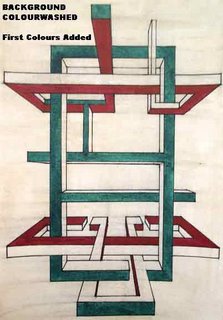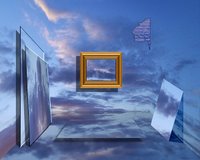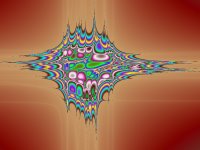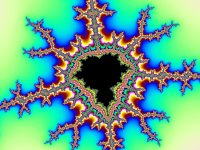Generative Art
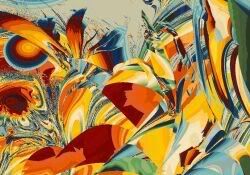 Generative Art
Generative Art“The main purpose of my project is to create pictures – artworks on the screen of the computer, to choose interesting and aesthetic examples and save or print them. Pictures are created using my own genetic designed software without applying any existing program of graphic design available in the world…”
According to Wikipedia.org, generative art refers to “art or design that has been generated, composed, or constructed in a semi-random manner through the use of computer software/mathematical algorithms…”
When Soban first started creating his artwork, he used to use GWBASIC but then he switched to Visual Basic. The computation of the functions in the program is that it will only create the art once, and will never be repeated in the future. According to the art process, there are infinite numbers of possibilities. Take for example, 3 colored squares, with 16 different background and square colors in addition with 100 different dimensions of squares (135 possible positions of the squares on the screen). Having said that, it can take more than 80 billions years to see all combinations. And of course, this is just a simple example. So the possibilities of creating such art are endless.
As mentioned before, generative art is using mathematical instruction to basically create art and this is exactly what Soban does. He also defines the rules by which the artworks are created with influence of unpredictability. The calculations that Soban inputs in the program defines mathematical expressions that have definite values of all x and y coordinates. For example, he has created on program that allows him to move around (up, down, right, left) and then discover how the image looks from different views from the starting point of the coordinates (0,0). The important thing is the to apply the right and correct mathematical functions that create interesting shapes far away from point (0,0).
As stated earlier, he created his first art using BASIC and random number generator. During the 80’s, many people were amazed to see Soban’s new way of creating art. The mathematical expressions were that of choosing the largest elements determining an artwork such as shapes, sizes, colors. It was always unpredictable and would never repeat again. Here are two examples of his first artwork on a computer.

In 1999, he found many articles and papers that were similar to the type of art that he was creating. Discovering different experiences from artists, he learned many new concepts of creating art on his computer. So it was a matter of time since he got his first program using mathematic expressions and formula based on algorithm. The art below are two examples of mathematically generated pictures.

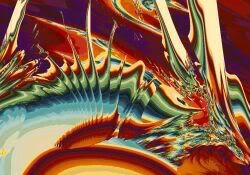 I would like to compare the two art above. I think its a difficult thing analyzing art that is created mathematically or even randomly. I really like the 2nd picture because its applies different colour combinations and looks more like a real artwork. However, the first art colours really stands out and gives an impression of something sharp or fire-like is portraited on the art.
I would like to compare the two art above. I think its a difficult thing analyzing art that is created mathematically or even randomly. I really like the 2nd picture because its applies different colour combinations and looks more like a real artwork. However, the first art colours really stands out and gives an impression of something sharp or fire-like is portraited on the art.
On Soban’s website, he has posted up some of his demo programs that he has used to create his artwork. I have tried out 4 of his programs and they look pretty cool to me. These were:
- real time image generator based on mathematical algorithms
- text-based image generator
- square based generative program
- image generator using spray techniques
I really enjoyed using the image generator using spray techniques because it was quite new to me and it was different from the other programs I used. The text-based image generator was also a pretty funky piece of program. It basically uses text user inputs and based on that it creates the art. The other two were also good programs that I enjoyed using.
Here are some more artwork created by Soban
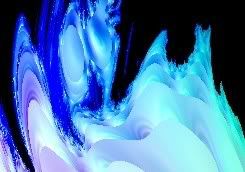
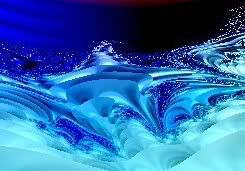
 I like the oceanic blue used in the first 2 art and for the one above, it looks more or like a graffiti art with different colours and shapes forming a vague image which looks pretty awesome
I like the oceanic blue used in the first 2 art and for the one above, it looks more or like a graffiti art with different colours and shapes forming a vague image which looks pretty awesome
Rerferences: Wikipedia, Soban's Site

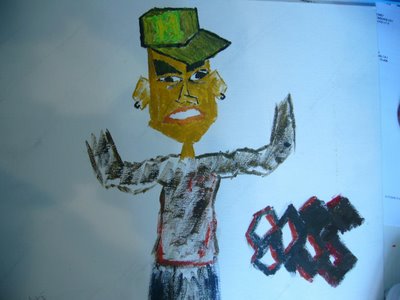

 Heres some art I created recently...
Heres some art I created recently...



 Alan King was born in Greenwich, South East London, in February 1952. At a young age, he started drawing complex buildings and was ‘experimenting with perspective.’ When he shifted his school to Eltam Green School, his art teacher allowed him to develop their own art and this is when Alan discovered his creativity. He introduced the Surreal Art of Dali, and the groundbreaking surreal photography of Herbert Bayer.
Alan King was born in Greenwich, South East London, in February 1952. At a young age, he started drawing complex buildings and was ‘experimenting with perspective.’ When he shifted his school to Eltam Green School, his art teacher allowed him to develop their own art and this is when Alan discovered his creativity. He introduced the Surreal Art of Dali, and the groundbreaking surreal photography of Herbert Bayer. 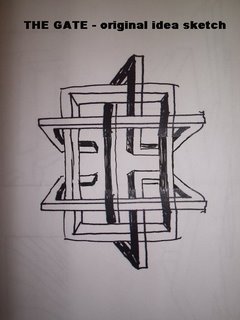 As we can see in the above picture, sketches are made. This, of course is his first original idea of the art, The Gate. As of yet, he hasn't used any form of technology with the art, just the traditional form of paper and pencil.
As we can see in the above picture, sketches are made. This, of course is his first original idea of the art, The Gate. As of yet, he hasn't used any form of technology with the art, just the traditional form of paper and pencil.  Once he got the basic idea of what he is going to create, he moves on a more detailed view of his art. Specific and accurate, as you can see in the above picture, has been created through line drawing. This is basically the final version of the art and in the next process, he has only added colour to his art.
Once he got the basic idea of what he is going to create, he moves on a more detailed view of his art. Specific and accurate, as you can see in the above picture, has been created through line drawing. This is basically the final version of the art and in the next process, he has only added colour to his art. 